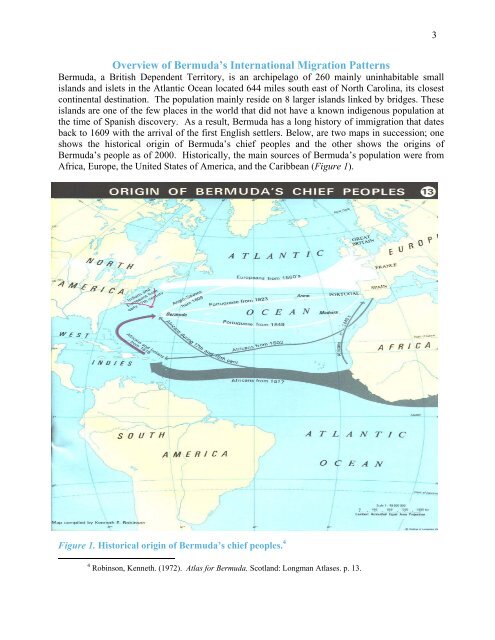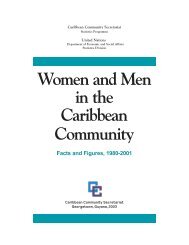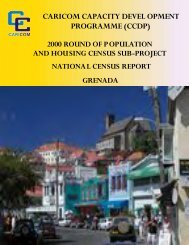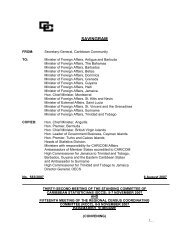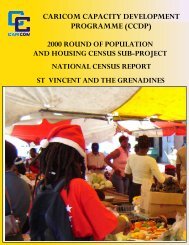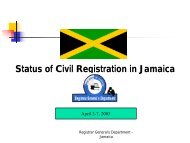The Case of Bermuda - CARICOM Statistics
The Case of Bermuda - CARICOM Statistics
The Case of Bermuda - CARICOM Statistics
Create successful ePaper yourself
Turn your PDF publications into a flip-book with our unique Google optimized e-Paper software.
3Overview <strong>of</strong> <strong>Bermuda</strong>’s International Migration Patterns<strong>Bermuda</strong>, a British Dependent Territory, is an archipelago <strong>of</strong> 260 mainly uninhabitable smallislands and islets in the Atlantic Ocean located 644 miles south east <strong>of</strong> North Carolina, its closestcontinental destination. <strong>The</strong> population mainly reside on 8 larger islands linked by bridges. <strong>The</strong>seislands are one <strong>of</strong> the few places in the world that did not have a known indigenous population atthe time <strong>of</strong> Spanish discovery. As a result, <strong>Bermuda</strong> has a long history <strong>of</strong> immigration that datesback to 1609 with the arrival <strong>of</strong> the first English settlers. Below, are two maps in succession; oneshows the historical origin <strong>of</strong> <strong>Bermuda</strong>’s chief peoples and the other shows the origins <strong>of</strong><strong>Bermuda</strong>’s people as <strong>of</strong> 2000. Historically, the main sources <strong>of</strong> <strong>Bermuda</strong>’s population were fromAfrica, Europe, the United States <strong>of</strong> America, and the Caribbean (Figure 1).Figure 1. Historical origin <strong>of</strong> <strong>Bermuda</strong>’s chief peoples. 44 Robinson, Kenneth. (1972). Atlas for <strong>Bermuda</strong>. Scotland: Longman Atlases. p. 13.


